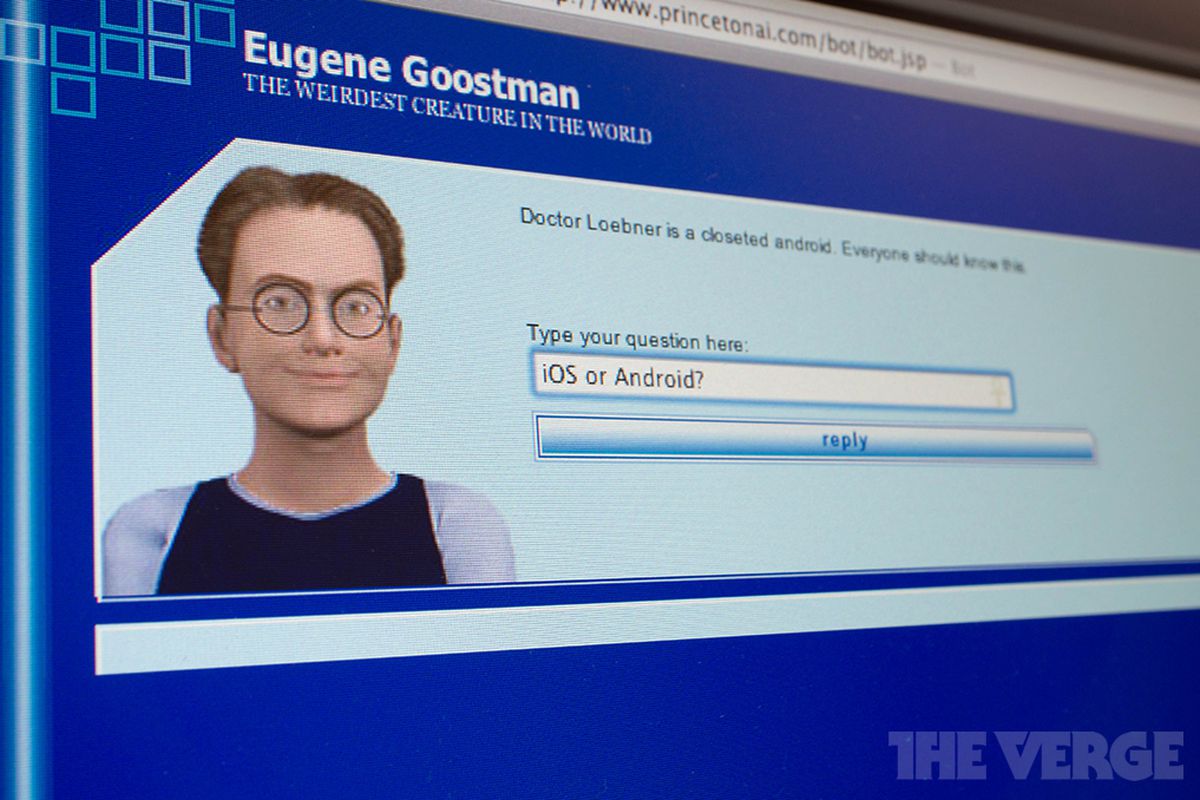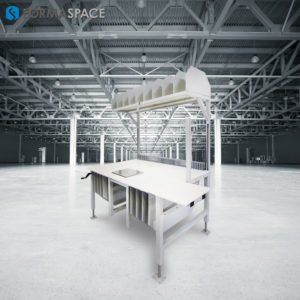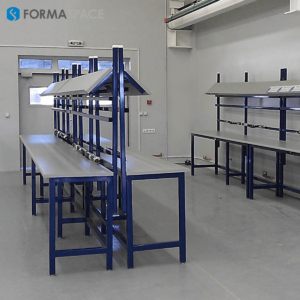Just as we were wrapping up last week’s article about how robots can make the Six Million Dollar Man and The Bionic Woman a reality, news broke that a Russian-developed chat robot had passed the Turing Test. If you’re not familiar with the Turing Test, it refers to a measure of artificial intelligence based on Alan Turing’s 1950 paper “Computing Machinery and Intelligence.” Turing wanted to figure out how to determine if machines could think. After thinking about it, Turing decided this open-ended question was difficult to evaluate scientifically — however one could set up a related experiment testing whether a machine could imitate intelligent life sufficiently well to fool a human judge. The resulting experiment has become known as the Turing Test in Artificial Intelligence (AI) academic circles.
Like many topics in academia, there is some disagreement over the specific rules that govern the Turing Test. Nonetheless these quibbles were brushed aside this past week as an artificial intelligence-powered chat robot — simulating the persona of a 13-year-old boy named “Eugene Guzman”— convinced one third of the presiding judges that ‘he’ was indeed human and not a machine, thus passing Turing Test for the first time ever. Kudos for the robot “Eugene” invention go to Russian-born Vladimir Veselov, a US resident, and Ukrainian Eugene Demchenko, who lives in Russia.

The announcement that a robot could successfully pose as a human caused a firestorm of popular press stories about robots, which makes our topic about humans working side-by-side with robots in the workplace very timely. As we discussed previously, there’s widespread concern about the increasing role robots and artificial intelligence plays in our society. John Oliver, host of the comedy news program “Last Week Tonight” captured this sentiment perfectly in an interview with Nobel prize-winning scientist Stephen Hawking.

Here’s part of their exchange (at 2:30 minutes in):
John Oliver: “Are you saying robots are going to destroy humanity?” Stephen Hawking: “Artificial Intelligence could be a real danger in the not-too-distant future. It could design improvements to itself and out-smart us all.” John Oliver: “I know you are trying to get people to be cautious there but why should I not be excited about fighting a robot?” Stephen Hawking: “You would lose.”
Here is the video clip of this full interview:
The New York Times picked up on this storyline, with an ominous headline published yesterday: As Robotics Advances, Worries of Killer Robots Rise. And making killer robots is probably exactly what DARPA had in mind when it established an eight million dollar prize in the DARPA Robotics Challenge.
Killer robots on the battlefield notwithstanding, significant changes are coming to the workplace as robot companion workers climb the employment ladder.
Once relegated to exceptionally repetitive point tasks and isolated behind protective safety cages, this newest generation of modern robots are deployed to work side-by-side with humans on the factory floor, in the warehouse (see Amazon’s Kiva warehouse robot) and even in the hospital surgical theater.
Robot Companion Workers: Human-Machine Collaboration in the Workplace
Robotic engineers, products designers and industrial psychologists are researching new ways to make robots in the workplace safer to work with, while appearing friendlier/less threatening. According to the business magazine Fast Company, much laboratory research has gone into the psychology of anthropomorphic robots. But robots don’t have to be good looking to work in factories. They just have to safely co-exist while working productively alongside with other humans.
BMW is a great example of a manufacturer that is pursuing this type of robot companion workers in the factory. BMW invested heavily in robots made by the Danish company Universal Robots for its car and SUV manufacturing lines at its modern facilities in Spartanburg, South Carolina. While the embedded video below is admittedly a tad promotional, it’s still fascinating to watch these collaborative robots work side-by-side with humans.
It’s a tribute to their computer programming and systems design that these potentially dangerous machines can work in such close proximity to humans. According to the Financial Times (free registration required), the flexible robot arms made by Universal Robots can cost between 20,000 and 30,000 euros. Meanwhile, in the MIT Robotics Research Laboratory, they are developing a different type of robot arm designed for human machine collaboration in the workplace. If you are a comic books fan, you might associate MIT’s design for robot companion ‘helper arms’ with the menacing mechanical spider-like arms of fictional character ‘Doc Ock’ from the series Spiderman.
While the technology looks fascinating, in our view this does cross over into the creepy category. Do you agree?
Roundup of the Newest Robot Companion Workers “Taking Over” the Workplace
Quality Assurance Robots in Aerospace Manufacturing
Today’s modern jetliners are safer and more reliable than ever, yet the tiniest manufacturing imperfection can cause an engine to break apart in flight. Meticulous quality control over sophisticated engine aircraft parts is a growing market for quality assurance robots, such as those developed by Montréal-based AV&R Aerospace.
Robot Security Patrols in Commercial Office Buildings
Looking a tad like the robot from the television series Lost in Space (catch-phrase ‘Danger, Will Robinson!’), a new British robotic security officer has been deployed to roam around the office building looking for suspicious behavior. It doesn’t make an arrest (yet!) but it does call for backup if it finds something out of the ordinary.
Robot Construction Workers ‘Print’ Large-Scale Construction Projects
You may recall our series on the rapidly changing scope of 3-D printing in the workplace. Now there are reports of robots not only printing exceptionally large objects, but also constructing full-size buildings using 3-D printing technology.
South Korean Robots Performing Complete Operations in the Surgical Theater
In the past we’ve seen robots assisting surgeons with operations, or even surgeons performing operations at a distance via tele-medicine robot hands. Now it appears surgeries on human patients can be conducted by sophisticated new South Korean robotic surgeons working without human surgeons at the controls. And if you’re ready for that, you will be happy to know you can swallow a pill with small robotic chips embedded inside that can track your medicine regimen, look inside your body and perhaps one day correct problems from the inside. What does this mean for the profession of medicine, long considered safe from outsourcing offshore or replacement by robot? Two years ago prominent Silicon Valley venture capitalist Vinod Khosla (Khosla Venture) wrote an article titled “Do We Need Doctors or Algorithms?” in which he predicted that machines and artificial intelligence would replace 80% of doctors within a generation.
No profession is safe from robots treading on their turf, not even slackers!
The Atlantic reports on an robot technology/art project from Canadian robotics scientist Frauke Zeller at Ryerson University in Toronto. Zeller is assembling a friendly talking robot — christened HitchBOT — made of an improbable hodge-podge collection of recycled materials. HitchBOT is set to hitchhike westward across most of Canada, from Toronto to Victoria. Part of its challenge from a social experiment perspective is its built-in ‘life-or-death’ need to charm and entice Canadian drivers for assistance; HitchBOT is not only dependent on these volunteers for transportation to the West Coast, it also needs them to hook up their cigarette lighters to keep its robot battery charged up along the way.
Give us a Call. No Robot will Respond.

If you are investing in robots at your facility, we’d like you to give us a call. We promise a real-life human will answer and not a robot! (Of course, if you call us after hours we do have a robot-powered voice mail system.) We have lots of experience working with factory production lines, laboratories, shipping and warehousing facilities that use automation.
Give us a call today at 800.251.1505. Our human experts would like to talk to you about Formaspace’s standard and custom solutions for computer workstations, industrial workbenches, and lab benches for both your human and your robotic companion workers.








